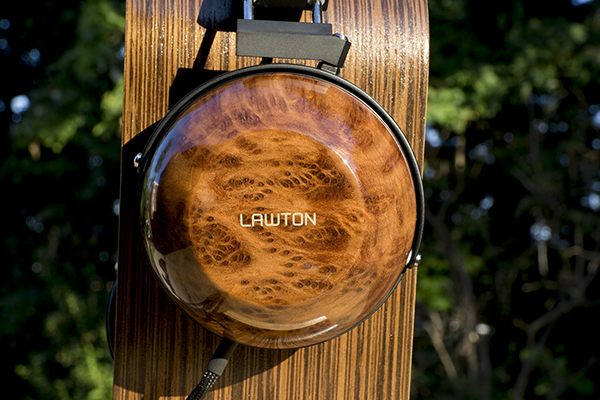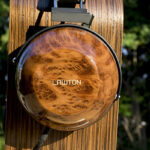Our review of the Lawton Fostex TH900, which is a re-tuned and redesigned edition of the original Foxtex closed-back dynamic driver headphone. It is priced at $679 for the cups and $1499 for the stock TH900 headphones.
Disclaimer: This sample was sent to us for our honest opinion. Headfonics is an independent website with no affiliate links or partnerships. We thank Lawton Audio for their support.
Click here to learn more about Lawton Audio products that we have previously featured on Headfonics.
Note, that this article follows our latest scoring guidelines which you can find in more detail here.
A long time ago, in an audio design lab far, far away, Fostex had created and implemented the original and famous D2000, 5000, and 7000 headphones for Denon. Yes, those headphones were technically Fostex models under the guise of the Denon logo and branding.
Soon after the discontinuation of the original Denon D-series, demand and used prices skyrocketed. At that point in time I’d found myself pacing feverishly back and forth, furiously tapping the F5 key on my keyboard, hoping to refresh Head Fi’s for sale page to be first to respond to a newly listed Denon D7000.
I was more than willing to go to war for one of these bad boys, as it has always been one of my very favorite headphones in any price tier.
When I heard that Fostex had announced its own series of upcoming dynamic driver headphones, both of which were physically modeled after the original Denon D-series, I felt as giddy as a schoolgirl frolicking through the woods with infinite happiness.
Background
Mark Lawton, ye’ diabolical Denon modifier extraordinaire, has long been offering custom-modified Denon D-series headphones, custom cables, gorgeous custom wooden cups, and very needed proper dampening of the inner acoustic chambers.
Lawton now also performs surgical mods and upgrades for the Fostex TH600 and TH900. This guy does brilliant work and I think it very apparent that each time one of us looks upon one of his custom wooden cups for these headphones, we get an aching feeling deep within our gut as our eyes begin to water, drool persisting to drip off the corners of our mouths.
It’s okay, you are not alone if this is happening. I can recommend you an Audiophiles Anonymous Club meeting where users talk about these sorts of things…punch and pie served on Fridays. Most of us went through this and many of us have a weakness for woody headphones, so tempting and deliciously juicy on the eyes as well as the ears.
Design
The stock TH900 cups as designed by Fostex were made of Japanese cherry birch with Urushi lacquer. The manufacturing process of the cups alone is painfully slow, precise, and given the utmost attention to detail.
There was a great deal of love and care put into the physical process of producing stock cups for this headphone. The coloration of the wooden cups prior to painting, they are beautiful, Fostex ruined the entire naturally gorgeous grain!
Also, I personally think the super glossy black plain job looks better than the red paint job given to the final product. Man…they double-ruined it! I am sorry, this is a purely subjective thing of course, but I think the stock red cups of the TH900 look like someone took a red sharpie marker to the wooden cups.
They have a flaked, glittery look to them that I find unappealing. I would have preferred they just clear glaze the natural wood grain, or keep it that awesome shiny black paint job with a nice, bright silver logo. Ugh, missed opportunities. Fostex put a ton of real love into that cup production, but the end result isn’t as nice looking as Lawtons by a long shot.
Variations
Lawton offers many types of wood through various price ranges, too many to name. Each one is a beautiful masterpiece in its own right and capable of altering the sound signature in a noticeable manner.
Mark was gracious enough to send me the uppermost echelon of customization options that included Old Growth Redwood Burl wood, an option that costs nearly $700 per set by itself.
I must say, this could be the most beautiful wood that I’ve ever laid my eyes upon. I have a bit of a weakness for contrasting highlights and shadows inside woods such as this, and I also prefer this lighter appeal to the hue of the wood itself over some of the darker woods that are available.
In natural sunlight, the grains appear bright and vivid, reflecting sunlight in knee wobblingly beauty, flagrant disregard for my audiophile sanity. Thanks, Mark. You broke my brain.
Damping Material
Mark also uses an undisclosed material that is not commercially available on the inside of the cups, which helps properly dampen the treble experiences…scratch that…the treble flaws the original stock D7000 and TH900 have.
There is a fair quality improvement, at least in my opinion and as my ears experience it, in Lawton’s modifications to the original Denon or Fostex headphones.
I have owned the stock Denon D7000 and installed a version of Lawton’s dampening via the DIY kit myself and for a number of people whom I recommended this headphone to in the past, as well as having owned the Fostex TH900 in its unmodified form for some time.
There is no doubt in my mind that this material enhances the quality of the hot treble of the Denon D7000, toning it down a fair degree and reducing brightness enough to experience a bit more detail.
In the case of the TH900, I’ve always felt the treble to be a bit artificial and lacking in presence, even a bit reclusive. However, in Mark’s version of this headphone, the upper end experiences a bit more lively.
Originally, when I had first purchased the stock TH900 for myself, I’d had a constantly raised eyebrow over the quality of the treble experience. In Lawton’s upgraded version, I do not get the sense.
With that in mind, I do feel there is a noticeable improvement in clarity across the board, the wooden chambers do make a difference in sound staging, positioning, and tone…but more on this later in the sound quality area.
Comfort & Fit
Just like the original Denon D-series headphones, the Fostex TH900 shares virtually the same design, fit and build. In my opinion, most headphones should implement a headband like this, something as simple as possible with plenty of give and padding.
A poor headband design is a pet peeve of mine, as most of you are aware. I find this type of headband extremely comfortable, lightweight, and functional, although not conforming to the degree I would prefer it.
If I had a choice, I would alter the angle approach of the headband slightly to be more conforming to the shape of a normal human head, instead of one that is more like a half-moon or circle.
There really isn’t much to complain about despite looming around 400g in weight. The headphone feels significantly lighter than what the numbers tell you on paper.
This is due mostly to the overall great fit and lack of clamping pressure the headphone exudes on your noggin, hardly any clamp at all. The headband itself evenly distributes weight across the top of your head and does not cause much pressure at the 12 o’clock position.
Coming off of some of the heavyweight planars, I can’t help but feel instant relief when it comes down to comfort. Those original Denon series and the relatively newer Fostex TH-series headphones are damned comfortable to boot, certainly, headphones that my neck and head appreciate.
The original stock Fostex pads are relatively comfortable, although I very much prefer the MrSpeakers Alpha pads as replacements over those. Lawton offers their own similar pads to the stock Fostex versions, all be it with a bit of a quality boost in every way. More supple, probably better leather materials as well as thicker padding.
Isolation
The TH900 isn’t really a closed-back headphone, to begin with, much like the Denon D7000. Technically speaking, it is semi-closed due to its very poor ability to prevent sound leakage: there is enough of it for me to consider it a semi-open headphone.
So, do not expect to be able to sit next to someone and listen to the 50 Shades of Grey audiobook and not have them raise an eyebrow, perhaps even move away to another seat on the plane…or if you are lucky move even closer to you. Sound leakage is an issue and the pads don’t really seal out sounds either, due in part to the lack of clamp the headphone offers.
Connectors
Lawton also employed some serious, large caliber balanced 3-pin Furutech XLR adapters, as well as corresponding dual XLR to ¼ adapters. These things feel like solid pieces of metal, I don’t think adapters get any more solidly crafted than this. They also make it impossible to use on the go or to relax outside, which is what I do often.
This TH900 is a loaner and was graciously gifted to me on loan by an actual customer of Lawton Audio, so his preferences do not match mine. I prefer my cables to be small and light, this cable however is massively intrusive and clearly intended never to be taken out of the owner’s listening area.






